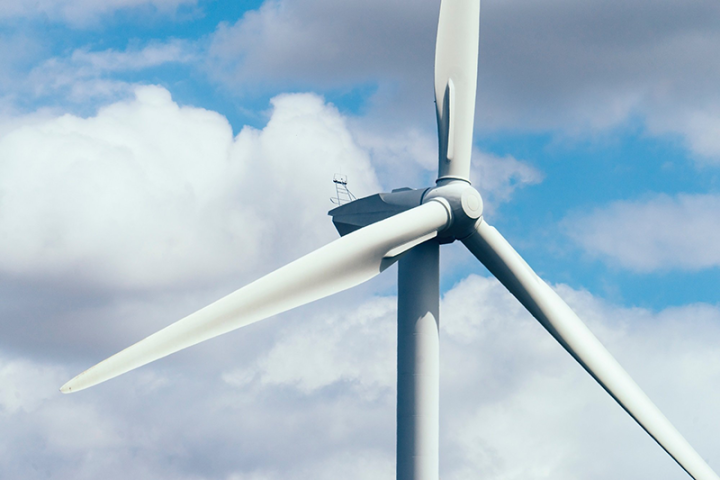100% recyclable wind turbine blades

The Elium® resin developed by the chemical company Arkema could make it possible to manufacture recyclable blades, a real innovation and a major challenge in a booming market.
Recycling end-of-life wind turbines, an environmental challenge
Wind turbine blades, which are mainly made of complex composite materials based on epoxy resin/carbon fibre or glass fibre, are difficult to recycle. These materials are part of the "thermosetting" family of plastics and cannot be melted down and reused for new, similar applications.
However, materials from the large family of "thermoplastic" plastics are recyclable! It is in this context that Zebra (Zero wastE Blade ReseArch) was launched. Zebra is a 42-month project with a budget of 18.5 million Euros, piloted by the IRT Jules Verne in Nantes (France), which brings together industrial stakeholders and research centres, key leaders in the wind energy sector such as Arkema, Canoe, Engie, LM Wind Power, Owens Corning, Suez, and more. Its objective: designing a 100% recyclable wind turbine blade made from a thermoplastic composite.
Elium® resin, a high-performance, innovative and ecological solution
The avenue explored to develop these blades was Elium®, an acrylate-based liquid resin known for its properties fostering recycling through the process of depolymerisation or dissolution and which offers the same levels of mechanical performance, lightness and resistance as the materials used up until now. "It is a thermoplastic material," explains Guillaume Clédat, Development Manager for Elium®: the composite parts made from it can be crushed, then depolymerised and, ultimately, their resin can be reused with its properties having remained unchanged”.
Highly-recyclable next-generation prototypes
Although Arkema has already validated the manufacturing process for these next-generation blades on small 25-metre blades weighing 2.5 tonnes, it is LM Wind Power which - as part of the Consortium - will produce and manufacture two 100% recyclable prototypes of 62 and 75 metres by 2022. They will be tested in order to validate the behaviour of the composites and the industrial feasibility of large-scale production. At the same time, the other partners in the ZEBRA project will work on developing and optimising each stage of the manufacturing process of the wind turbine blades as well as their recyclability, whether in terms of assembling the materials and then separating them, or waste management. Finally, a technical-economic study combined with a life cycle analysis will analyse the viability and durability of the next-generation thermoplastic blades.





